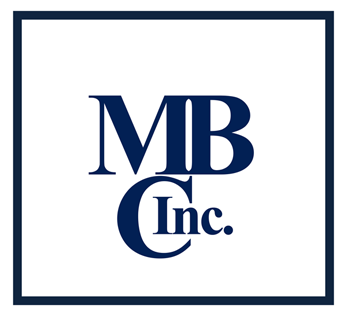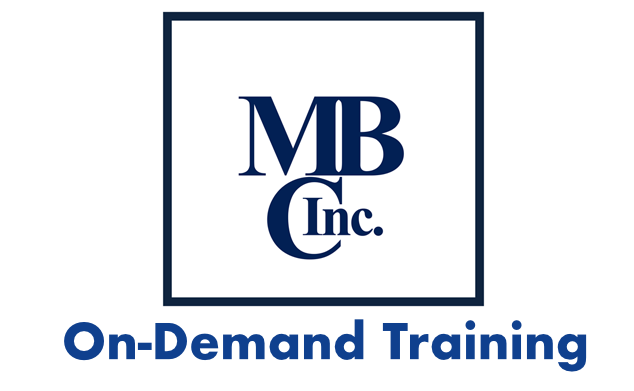Bi-Monthly Informational Guide
MBC, Inc. Quality Tips
Internal Audit
ISO/TS 16949, ISO 9001
“What Does Top Management do With Clause 4.1 of These Two Standards?”
In the last edition, I reviewed the required content defined by clause 4.1 of the ISO 9001 and ISO/TS 16949 standards, including the reasons for and benefit of each requirement.
Continuing with the requirements of these two standards, I would like to explore how management benefits from these requirements and how management, especially top management, can utilize these requirements and the organization receives the benefits.
First, let us assume the internal audit process is aggressively auditing the requirements of 4.1 and the organization is responding by compliance to the requirements.
If this is true then each business process has;
- Work flow defined (Flow Chart),
- Information and Resource requirements documented as part of the process,
- Criteria and methods documented,
- Process measurements in place, tracked and posted,
- Process objectives or goals defined and documented,
- 6. Documented plans for the achievement of the goals or objectives.
- Become beneficial to Top Management and to the organization.
Bullet 6 above is the objective of this edition.
How does the organization receive benefit from this requirement?
This is the direct responsibility of top management, their understanding of the process and process requirements, benefit of consistent implementation, scheduled review and questioning of these processes.
It is the role of top management to review the status of these processes on a regular basis. Most businesses review, monitor and react to financial information reviewed on a weekly or bi-monthly basis. This is to ensure the financial health of the organization.
Some of these same organizations review the quality system only on an annual or semi-annual basis. How can they expect quality improvement, customer satisfaction with such little oversight? Customer satisfaction is as much the responsibility of top management as is the financial health of the business.
- How can you expect to be financially healthy if your customer satisfaction is questionable?
- How can customer satisfaction be maintained and improved if top management does not give it proper attention?
- How can top management give proper attention if they don’t know what is going on in the manufacturing of their products or the delivery of their services?
In the end, Top Management MUST understand the business processes. When these processes and their benefit are understood only then is Top Management able to bring about sustained improvement for the organization, the organization’s employees and the organization’s customers.
Let us take a particular business process and look briefly at some of the action and benefit Top Management might consider.
All businesses must support the manufacture of their products or the preparation of their services to and for their customers. Once you have gotten past the requirement around safety for employees. There is nothing more important than the proper manufacture or delivery of services to the customers. Nearly all the other business processes are in support of manufacture of product or delivery of service. Purchasing, maintenance, sales, request for quote, training, HR, gauge calibration, shipping and receiving, quality, material handling, product design, etc. all support manufacturing.
What does it take? The internal auditor is responsible to ensure the process is properly documented and meets the requirements of the standards. When this is comprehensive, it becomes the responsibility of Top Management to ensure there are strategic plans in place to meet the goals and objectives of the manufacturing process. The measures may vary from business to business but will have some things in common. Business generally has objectives such as; on time delivery, quality, cycle-time, scrap/rework, etc. Top Management is required by both standards (clause 5.4.2 a) to have plans in place to meet the requirements of clause 4.1. To meet the requirements of the standards these plans MUST be documented.
Now Top Management must be in-tune with and on top of these goals. They need to be asking questions and leading the organization in the direction to achieve the goals. This drives development of proper job instructions, fully implemented and followed by all employees on all shifts. This is a massive undertaking and will need constant vigilance from all levels of management. Efficient implementation of process-control-plans developed from such sources as Process FMEA, Process Flow Chart and other sources. Effective problem solving to address scrap, rework, cycle-time issues, efficient material handling, cycle-to-cycle, person-to-person, shift-to-shift, and department-to-department variation, disciplined problem solving must be followed as an approach that addresses not just the symptoms but actually gets to root cause and leads to permanent corrective action. All this requires careful and consistent “counter-measures” processes that lead to success.
Hard work? Yes! Is it worthwhile? Yes!
This is all about Leadership; Make sure you are following my other newsletter addressing the “Leadership Secrets of Colin Powell”, “The Sixteen Attributes of an Effective Leader”. All this works together and nothing lives in a ‘silo’. All business processes and all leadership attributes are a series of interactions leading to a successful organization.
Spread the News
Please forward these editions to others in your organization so they may receive the benefited of this newsletter. Tell other members of your company to go to www.MBCINcorp.com and sign-up for this newsletter by downloading the free report in the upper right corner of the home page.
For additional information about the Internal Audit Process, you may contact the President of MBC, Inc. at anytime; Phone 931.637.1446, or E-mail – Bmartin@MBCIncorp.com
Thank You
Bill Martin – President
MBC, Inc.
931.637.1446

